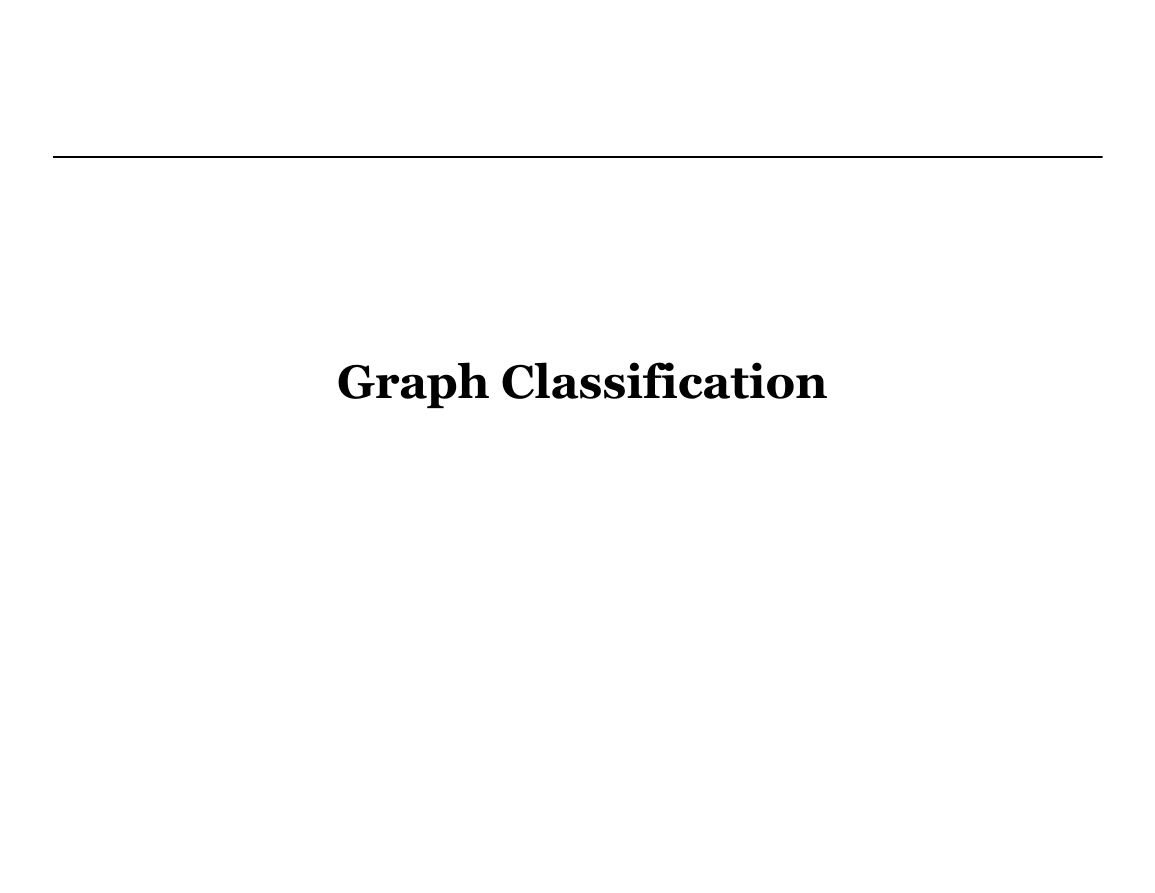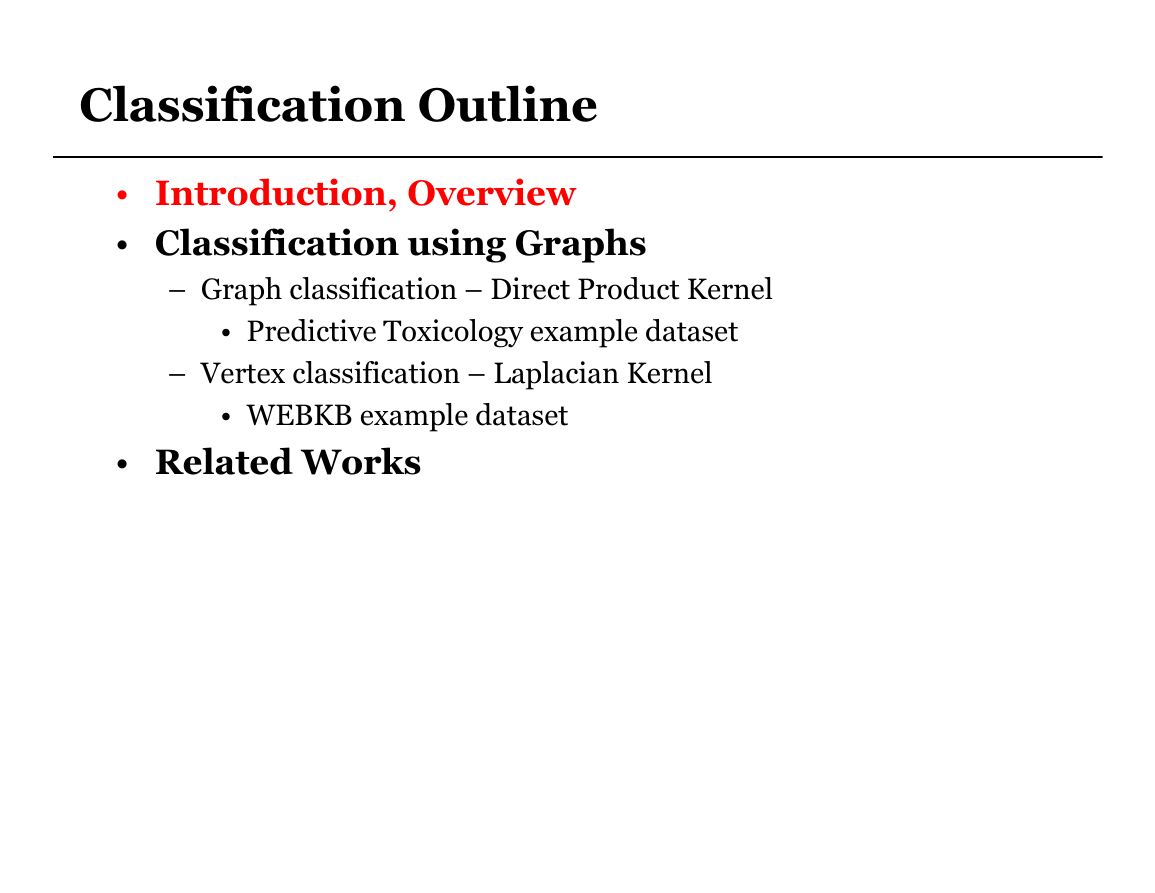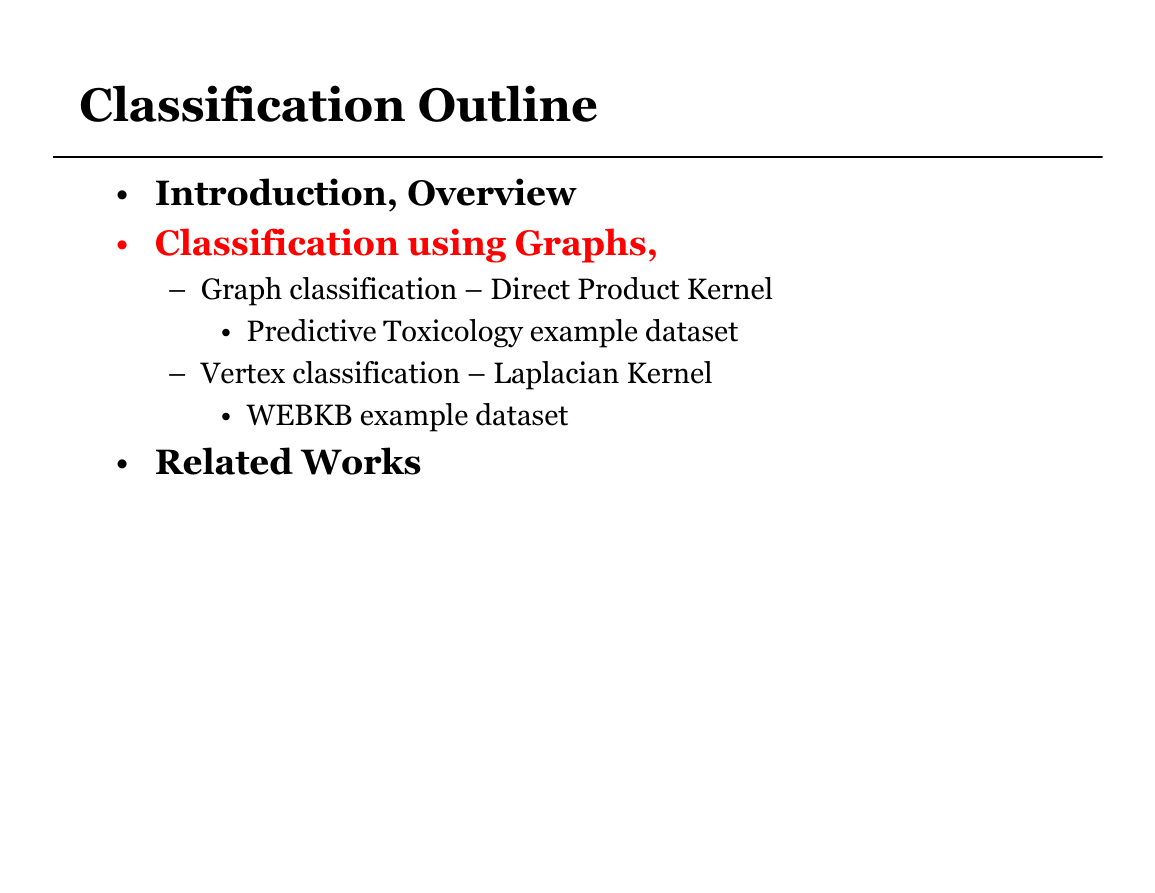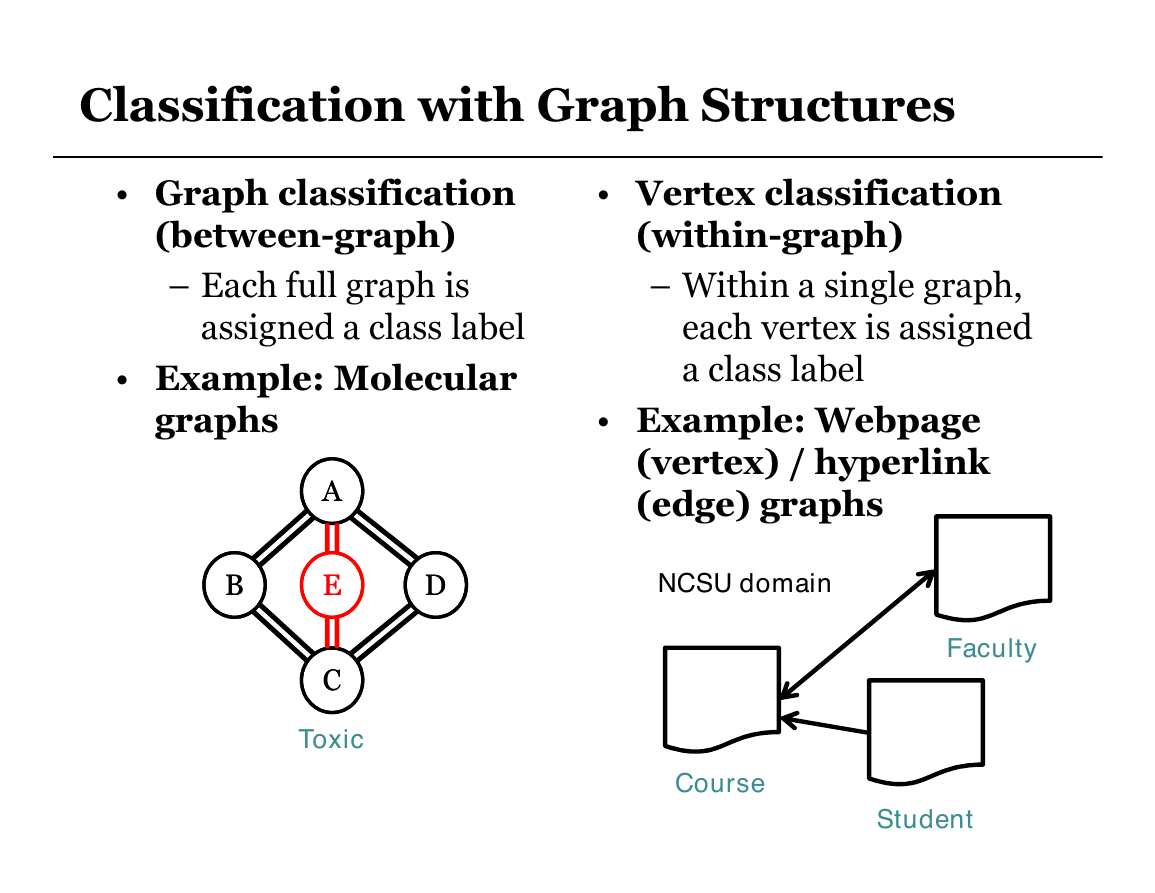Graph Classification
�
Classification Outline
• Introduction, Overview
• Classification using Graphs
– Graph classification – Direct Product Kernel
• Predictive Toxicology example dataset
– Vertex classification – Laplacian Kernel
• WEBKB example dataset
• Related Works
�
Example: Molecular Structures
Known
Toxic
Non-toxic
BB
AA
CC
DD
CC
BB
AA
DD
EE
Task: predict whether molecules are
toxic, given set of known examples
Unknown
BB
CC
AA
EE
CC
BB
AA
DD
DD
EE
FF
�
Solution: Machine Learning
• Computationally discover and/or predict
properties of interest of a set of data
• Two Flavors:
– Unsupervised: discover discriminating properties among
groups of data (Example: Clustering)
Data
–
Property
Discovery,
Partitioning
Clusters
– Supervised: known properties, categorize data with unknown
properties (Example: Classification)
Training
Data
Build Classification
Model
Predict Test
Data
�
Classification
• Classification: The task of assigning class labels in a discrete
class label set Y to input instances in an input space X
• Ex: Y = { toxic, non-toxic }, X = {valid molecular structures}
Misclassified
data
instance
(test error)
Unclassified
data
instances
Training the classification model
using the training data
Assignment of the unknown (test) data to
appropriate class labels using the model
�
Classification Outline
• Introduction, Overview
• Classification using Graphs,
– Graph classification – Direct Product Kernel
• Predictive Toxicology example dataset
– Vertex classification – Laplacian Kernel
• WEBKB example dataset
• Related Works
�
Classification with Graph Structures
• Graph classification
• Vertex classification
(between-graph)
– Each full graph is
assigned a class label
• Example: Molecular
graphs
(within-graph)
– Within a single graph,
each vertex is assigned
a class label
• Example: Webpage
(vertex) / hyperlink
(edge) graphs
BB
AA
EE
CC
Toxic
DD
NCSU domain
Faculty
Course
Student
�
Relating Graph Structures to Classes?
• Frequent Subgraph Mining (Chapter 7)
– Associate frequently occurring subgraphs with classes
• Anomaly Detection (Chapter 11)
– Associate anomalous graph features with classes
• *Kernel-based methods (Chapter 4)
– Devise kernel function capturing graph similarity, use vector-
based classification via the kernel trick
�
















 2023年江西萍乡中考道德与法治真题及答案.doc
2023年江西萍乡中考道德与法治真题及答案.doc 2012年重庆南川中考生物真题及答案.doc
2012年重庆南川中考生物真题及答案.doc 2013年江西师范大学地理学综合及文艺理论基础考研真题.doc
2013年江西师范大学地理学综合及文艺理论基础考研真题.doc 2020年四川甘孜小升初语文真题及答案I卷.doc
2020年四川甘孜小升初语文真题及答案I卷.doc 2020年注册岩土工程师专业基础考试真题及答案.doc
2020年注册岩土工程师专业基础考试真题及答案.doc 2023-2024学年福建省厦门市九年级上学期数学月考试题及答案.doc
2023-2024学年福建省厦门市九年级上学期数学月考试题及答案.doc 2021-2022学年辽宁省沈阳市大东区九年级上学期语文期末试题及答案.doc
2021-2022学年辽宁省沈阳市大东区九年级上学期语文期末试题及答案.doc 2022-2023学年北京东城区初三第一学期物理期末试卷及答案.doc
2022-2023学年北京东城区初三第一学期物理期末试卷及答案.doc 2018上半年江西教师资格初中地理学科知识与教学能力真题及答案.doc
2018上半年江西教师资格初中地理学科知识与教学能力真题及答案.doc 2012年河北国家公务员申论考试真题及答案-省级.doc
2012年河北国家公务员申论考试真题及答案-省级.doc 2020-2021学年江苏省扬州市江都区邵樊片九年级上学期数学第一次质量检测试题及答案.doc
2020-2021学年江苏省扬州市江都区邵樊片九年级上学期数学第一次质量检测试题及答案.doc 2022下半年黑龙江教师资格证中学综合素质真题及答案.doc
2022下半年黑龙江教师资格证中学综合素质真题及答案.doc